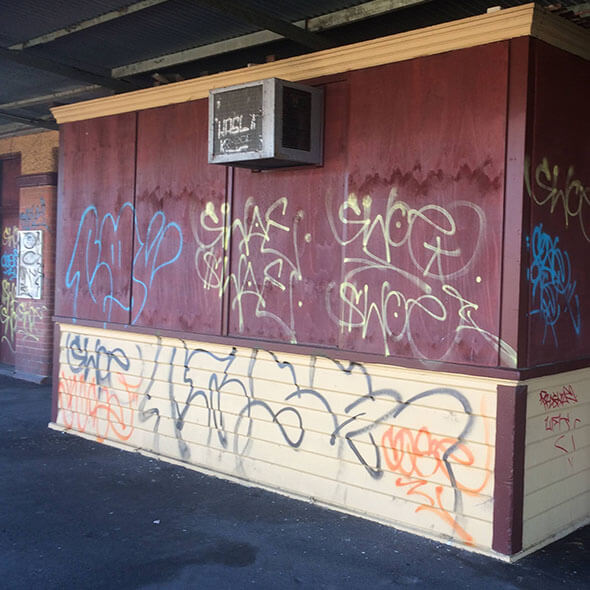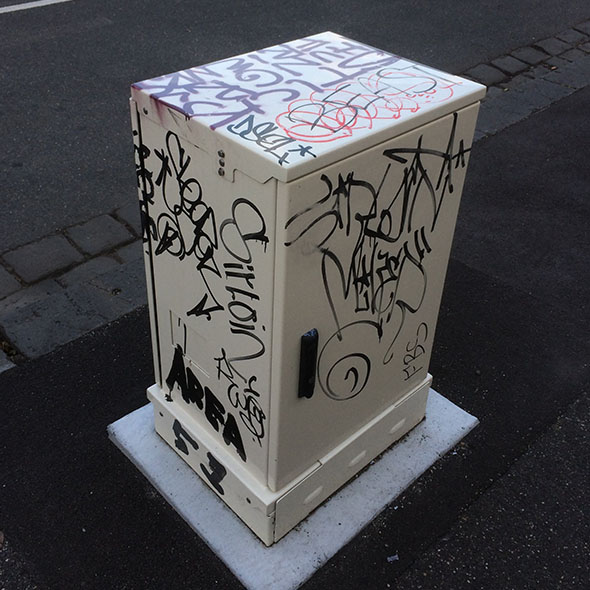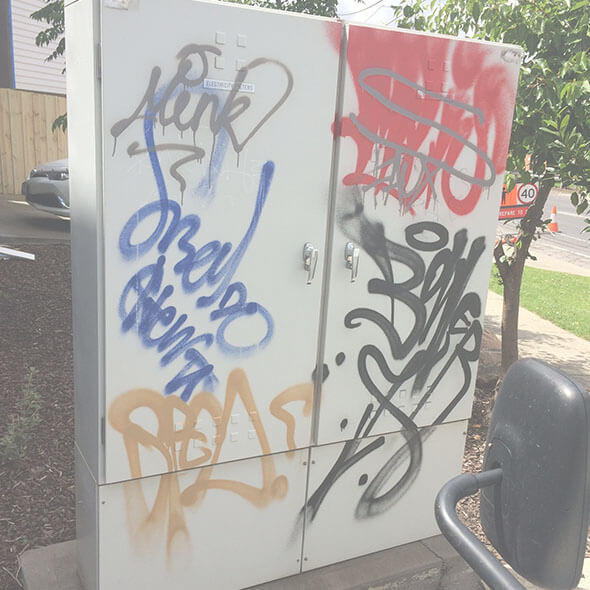While the City of Melbourne recognizes the importance of street art in contributing to a vibrant urban culture, illegal graffiti is a major headache to property owners. Despite this conflict, have you ever considered the different characteristics of graffiti? Or even the differences between graffiti and street art?
Research has certainly shown that most people do not like tagging or the illegal marking of buildings with name tags. However, many people do appreciate street art or the more elaborate works that adorn the sides of visible buildings, with the correct permissions of course. So, in this article, we aim to give you the knowledge to decide for yourself – is it graffiti or is it street art?

What is graffiti?
In essence, graffiti is classified as writing, drawings or etchings made on public walls or other public surfaces. Graffiti is carried out without permission from the property owner, so it is illegal. In addition, it is normally in a very visible public space. Graffiti ranges from simple written words to more elaborate wall paintings and has existed since ancient times. Early examples date back to ancient Egypt, ancient Greece, and even the Roman Empire.
The characteristics of graffiti:
Have you ever walked down a street, or travelled by train, and spotted a certain piece of graffiti in an inaccessible place? You may have taken a moment to admire the dexterity of the artist. In addition, you may have wondered, ‘graffiti, what is the problem’ if you find it inoffensive or just eye-catching.
Graffiti not only relates to gangs and criminal activity. There are different types and styles of graffiti that some groups or individuals use to express political points of view or to raise social awareness. One of the advantages of graffiti is that there are no rules. However, one of the main characteristics or the reputation of graffiti is that of tagging.
Types or most common characteristics of graffiti:
To sum up, the types or characteristics of graffiti are as follows:
To Tag:
Tagging is an identifying mark or signature of the graffiti artist or tagger. It’s usually a simple design and only in one color.
Throw-Up:
Likewise, a throw-up is like a more complicated tag. It usually has two or more colors and bubble-style lettering. Throw-ups are carried out quickly and repeatedly, just like a tag.

Blockbuster:
Similarly, a blockbuster is like a massive throw-up, usually in blocky letters. Blockbusters are used to cover a large area in a small amount of time. Graffiti artists paint blockbusters with rollers, which makes them faster and easier to do.
Stencil:
The anonymous street artist Banksy has made stencil graffiti famous. It is a form of graffiti that makes use of stencils to create an image or text that is fast and easy to reproduce.
Posters:
Above all, posters are quick and easy to put up, and can be used to promote an event, party or used as an expression of art. Promoters and bill posters have the posters printed in advance and then paste them up all over the city.
Stickers:
A sticker, or slap, is like a small poster, and just as quick and easy to put up. Many stickers are simply tags on postage labels, but sometimes they are more professional.
When is graffiti considered art?
The debate about graffiti as a form of art is still ongoing. After all, a lot of work goes into some of the artworks. So when is graffiti considered art? Most people will agree that graffiti can be considered as a piece of art when the artist and the artwork have been given permission or commissioned by the property owner. No matter the type of graffiti, if no permission has been given it is considered as destruction to property, and therefore illegal.
Graffiti Advocates
While many people consider graffiti a criminal act and are concerned about graffiti clean up costs, there are many graffiti advocates. The City of Melbourne is one of them. The City of Melbourne’s Graffiti Management Plan distinguishes between:
- firstly, the need to remove unwanted graffiti applied without permission, and,
- secondly, street art placed on walls and infrastructure with the blessing of property owners.
While there is a substantial difference between tagging and actual art, if you have become the victim of graffiti you will need to act fast. One company in Melbourne is doing just that. Ablate offers various different graffiti removal solutions at a competitive price. Why not contact Ablate today for a free, no-obligation quote?










